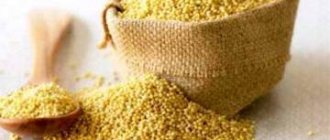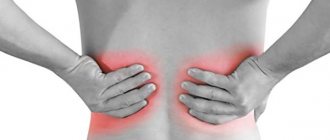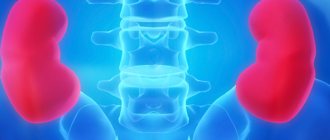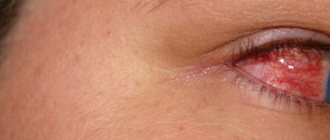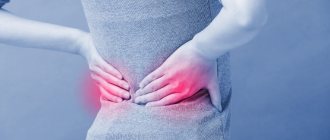A bathhouse is a place for relaxation, restoration, as well as hygiene and cosmetic procedures. Heat, steam, temperature contrast help activate the immune system.
Bath procedures are presented as a panacea and a safe way to treat various diseases.
Is it possible to go to the bathhouse with pyelonephritis? Traditional herbalists recommend thermal procedures as an effective and safe remedy for treating diseases of the urinary system.
Official medicine prohibits this method, especially in acute inflammatory processes.
Is it possible to go to the bathhouse if you have urolithiasis or other pathologies of the urinary system?
The benefits of a bath for a healthy person
Bath procedures have a positive effect on the condition of a healthy person.
When visiting a steam room, the following processes occur in the body:
- relaxation, light sedation without the use of drugs;
- restoration of muscle activity;
- activation of red blood cell production;
- hardening of the body, as heat and cold alternate;
- removal of fluid as a person actively sweats. This gives a long rest to the kidneys and urinary system;
- under the influence of essential oils used during bath procedures, the activity of rhinoviruses is suppressed;
- the elasticity of blood vessels increases, which has a beneficial effect on the heart;
- the symptoms of chronic respiratory diseases are mitigated;
- the frequency of arthritis relapses decreases;
- The skin is cleansed, as the pores open under the influence of temperature. Excess sebum and toxins are removed with liquid.
The effectiveness of bath procedures has been proven by official studies using control groups.
Allowed methods of warming up
There are several ways to warm your kidneys. It is convenient to use a special elastic belt made of natural wool when your back starts to hurt.
You can use other methods of warming up - apply a warm heating pad with water, heated sand or salt. Water treatments help with colic.
The simplest method
A belt made of camel, sheep or dog hair is the simplest remedy for relieving nagging pain. It not only accumulates heat, but also has an irritating effect, stimulating a rush of blood to an unhealthy area of the body. In addition, patients with a belt can move around and continue to do their business. Instead of a belt, you can take a woolen blanket.
Warmer
You can use another very accessible warming method. A rubber heating pad is filled with hot water (temperature 40-50°C), wrapped in a flannel diaper folded in 4 layers and placed on the back. The patient is covered with a blanket. If you have an electric heating pad at home, you can also use it for a thermal procedure. It is necessary to set the regulator to a moderate temperature. After the procedure, your lower back will hurt less.
A very convenient device that you can use at home is a salt heating pad. It fits well to the body, and the solution inside the container retains heat for a long time.
Water treatments
A warm bath saves you from an attack of urolithiasis, when the stone moves inside the kidney and then travels along the ureter to the bladder. Doctors, when asked whether it is possible to warm the kidneys during colic, give an affirmative answer with one caveat - if the body temperature is not elevated.
The water in the bath should be pleasantly warm (38-39°C) so that the body warms up, the smooth muscles of the ureters relax, and the pebble goes down easier.
Baths and saunas are suitable for kidney disease only during remission. If you have pain and other symptoms, it is better not to visit places with too high a temperature.
Warming ointments
For kidney pain, doctors do not recommend using an ointment with a warming effect. In case of bacterial infection (pyelonephritis), heating is generally prohibited, and if you rub the lumbar area during colic, the condition may worsen.
The following ointments are used only with the permission of a urologist:
- Apizartron;
- Finalgon;
- Menovazin;
- Capsicam.
How does a bath affect the kidneys?
Under the influence of high temperatures, the excretory function of the sweat glands is activated. This is necessary to cool the body.
Against the background of increased sweating, diuresis decreases, sodium loss in urine decreases, which reduces the load on the urinary system.
In addition, sodium metabolism is normalized. This helps lower blood pressure and reduce blood flow to the kidneys.
When examining a group of patients taking thermal procedures in a sauna, a decrease in lower back pain, improvement in urodynamics, and normalization of the color and composition of urine were noted.
The principle of the influence of dry heat at the present stage of development of medicine is not fully understood.
But the use of a Finnish sauna with low humidity for kidney diseases without signs of inflammation or bacterial infection is included in the recommendations for spa treatment of patients with chronic cystitis, interstitial pyelonephritis, urolithiasis with small stones.
If your kidneys hurt after a bath or the condition worsens spontaneously, then thermal procedures should be stopped and consult a doctor.
KSD therapy in the steam room
Kidney stones: is it possible to go to the bathhouse? As has already been said, yes, it is possible, but only if the doctor allows it. In addition, you need to follow some rules.
1.) Stay in the steam room. Forbidden:
- eat 1-2 hours before visiting the steam room;
- drink strong tea, coffee, soda and, of course, alcohol 1 day before visiting the steam room;
- stay in the steam room for more than 3 minutes;
- visit a steam room where the temperature is above 50°C;
- climb to the top shelves;
- enter without a hat, sheets or slippers;
- do physical exercise.
2.) Stay in the shower room. Ice water is taboo.
3.) Stay in the rest room. Drink. For effective treatment, adherents of herbal medicine recommend using aromatic tinctures and decoctions from the following plants:
- barberry fruit;
- juniper fruits;
- rose hips;
- fennel fruit;
- licorice rhizomes;
- wheatgrass rhizomes;
- steelweed rhizomes;
- calamus rhizomes;
- stems of shepherd's purse;
- strawberry leaves;
- birch leaves;
- parsley leaves;
- lingonberry leaves;
- black elderberry flowers;
- willow bark;
- flax seeds.
Recipes can be found on the Internet. True, I advise you not to tempt fate and seek help from a herbalist.
4.) Stay in the rest room. Food. For effective treatment, experts recommend adherence to proper nutrition. A sample menu should be drawn up by a doctor. As a rule, people with ICD should use:
- melon;
- watermelon;
- apples;
- pears;
- grape;
- celery;
- pumpkin;
- carrot;
- prunes;
- black bread;
- oatmeal;
- buckwheat porridge;
- boiled eggs;
- honey.
5.) Stay in the rest room. Exercises. Don't be lazy. To enhance the effectiveness of bath procedures, you need to perform light exercises - swinging your legs and arms, bending over and squats.
That's all the recommendations. Now you know what is possible and what is not possible with ICD. As you can see, if you have kidney stones, you can go to the steam room, but be careful. Listen to your body.
Good health to you, dear readers! Until next time.
Quote of wisdom: Gymnastics, physical exercise, walking should be firmly established in the daily life of everyone who wants to maintain efficiency, health, a full and joyful life (Hippocrates).
Everyone knows that bath procedures have a positive effect on the human body. This fact is generally accepted and proven. Medical scientists have long been studying the effect of the bath both on the body as a whole and on individual human organs and systems. The bath activates the activity of the nervous system, internal organs, including the kidneys, changing the secretion of hormones. How does the bath affect the kidneys? And why do you need to know this?
This information is important for people who have problems with the work of this body. This will help to understand how suitable the bathhouse is for them. Although the final verdict on the medical indication for bath procedures should be made by the attending physician.
Bath procedures are an effective preventive, hardening and restorative remedy. They help improve the functioning of both the body as a whole and individual organs and systems, increase the body’s resistance to various diseases, increase vitality and performance.
In the bathhouse, the human body begins to react to heat, water, and temperature contrast, so the activity of the sweat and sebaceous glands is activated, gas exchange, mineral, and protein metabolism are enhanced. A large amount of breakdown products, urea, and lactic acid are removed from the body.
Thanks to the heat of the bath, valuable products of protein metabolism are formed in the skin, which are carried by the blood to all organs and parts of the body. The bathhouse helps us escape from everyday worries and emotional worries. The positive emotions that a bathhouse gives make it easier to perceive the troubles of the world around you.
The bathhouse treats many diseases, including kidney disease. Kidney disease is common, but bathing procedures are rarely used to treat it. This is due to the fact that the effect of high temperatures on the course of these diseases has been little studied. But, nevertheless, for some kidney diseases, a bath is a chance for recovery.
Bath procedures are indicated for urolithiasis with the passage of small stones, nephritis with moderate disorders, chronic kidney tuberculosis in the inactive stage and other kidney problems without kidney damage.
So what effect does a bath have on the kidneys? The bath definitely has an effect on the functioning of the kidneys, causing quick or long-term reactions. Rapid kidney reactions occur the moment a person begins to sweat. And long-term reactions appear towards the end of bath procedures, and if you take a long period of time, then after several months of regular bath procedures.
The speed of action is manifested in a decrease in sodium excretion in the urine. This figure decreases, since a lot of salts are excreted during sweating. Heat exchange processes use all the liquid to cool the body and thereby relieve the load on the kidneys, so they rest at this time.
The bathhouse treats many diseases, including kidney disease
Indications and contraindications for visiting a bathhouse for kidney disease
The answer to the question of whether it is possible to steam if you have a disease of the urinary system should be given by a doctor, based on the patient’s diagnosis and his current condition.
Bath procedures are recommended:
- in chronic forms of pyelonephritis, cystitis in remission;
- with a nonspecific form of inflammation of the pyelocaliceal system, that is, when the process is caused by a non-bacterial agent;
- for kidney stones, the presence of fine sand - if the size of the ureter allows the stones to be removed naturally;
- with interstitial nephritis without signs of renal dysfunction;
- with glomerulonephritis in chronic form beyond the acute stage;
- with tuberculosis of the urinary system in remission.
In case of active inflammation, the acute stage of the disease, thermal procedures are prohibited. Cases when it is not recommended to steam:
- pyelonephritis of any etiology in an acute course;
- hydronephrosis;
- large stones that, if spontaneously passed, can cause blockage of the ureter;
- tumors of the kidneys, bladder;
- malignant neoplasms of any organ;
- increased body temperature;
- before surgery or during the rehabilitation period after it;
- condition after injury;
- increased blood pressure;
- nausea;
- any inflammatory and bacterial diseases.
Bathing and kidney stones are not always compatible concepts. The doctor must make a decision in this case. If the sand is fine, then it is necessary to promote its removal, and at elevated temperatures the work of the sweat glands, but not the kidneys, is activated.
Warm foot baths for cystitis
Instead of such a global procedure as visiting a steam room, you can organize a local steam room - we are, of course, talking about a foot bath. You can steam your legs if you have chronic cystitis rather than acute one. If you decide that a modest bath will not be something terrible during an exacerbation, then, again, you risk “pushing” the infection upward.
Remember: floating the lower limbs during an exacerbation is dangerous - the infection can go up, getting into the ureters and even the kidneys. But with a chronic illness, during a calm period, soaring your legs is not only allowed, but also necessary.
Foot baths - how to take them:
Fill the basin with water 45-50 degrees; Dip your limbs into this water, add hot water if the main composition cools down; You can add your favorite essential oils or herbs to the water; After a foot bath, it is very important to wipe your feet dry and put on woolen socks; After the procedure, it is recommended to immediately go to bed, so it is better to carry it out in the evening.
Therapeutic effects of baths for various kidney diseases
The therapeutic effects of bath procedures are conventionally divided into current and long-term.
The quick effect is to normalize sodium metabolism and remove excess fluid without straining the urinary system.
With fluid retention in the body caused by chronic inflammatory processes in the kidneys, swelling disappeared after 5-6 bath procedures, and clinical urine parameters returned to normal.
At the same time, there is no load on the organs of the urinary system, and potassium ions are not removed from the body during bathing activities.
If you have a kidney cyst, nephrologists do not recommend actively taking a steam bath. Although this neoplasm is benign, it is prone to spontaneous opening. The maximum temperature in the steam room should be no more than 60 degrees, humidity – up to 30%.
Is it possible to go to the bathhouse if you have kidney stones? The nephrologist decides after examining the patient. An ultrasound of the urinary system is required.
If the size of the stones excludes obstruction of the lumen of the ureter, then bathing procedures are allowed, but with the obligatory replenishment of lost fluid.
For large stones, heat exposure is prohibited. Staying in a bathhouse can cause spontaneous movement of stones, blockage of the ureter and lead to emergency surgery.
Thermal procedures also affect the kidneys remotely. This consists of a general improvement in the condition of the body, increased immune defense and a reduction in the frequency of relapses of the disease.
Symptoms of pyelonephritis
As you know, it is better to prevent a disease than to treat it later. If you treat, it is better at an early stage before the disease is advanced. Thus, with adequate treatment, the patient has a greater chance of remission or complete recovery.
To receive timely treatment, it is important for a person to recognize the symptoms of the disease.
The symptoms of acute pyelonephritis are clearly expressed, but chronic pyelonephritis can be asymptomatic until the period of exacerbation of the disease.
Symptoms of acute pyelonephritis:
- Temperature increase to 38 - 40%
- Fever, chills
- Frequent and painful urination
- Severe back pain in the lumbar region
- Cloudy urine
- Swelling of the face and eyelids
Symptoms of chronic kidney disease are quite mild and practically invisible, which makes diagnosing this disease difficult. Symptoms usually occur during an exacerbation.
Symptoms of chronic pyelonephritis can be expressed as follows:
- Periodic increase in body temperature
- General weakness, drowsiness, increased fatigue
- Headaches
- High blood pressure
- Anemia
Symptoms of the disease do not always manifest themselves as expected, so you need to be careful about your health, especially if you have urological diseases.
Necessary restrictions
Physicians treat pyelonephritis, but you can speed up recovery and avoid relapses on your own and only by giving up certain habits that affect the condition of the kidneys and circulatory system.
- Diet. Any disease of internal organs requires maintaining a therapeutic diet and avoiding harmful, but, unfortunately, the most favorite dishes. To improve your blood composition and reduce the load on your kidneys, you should review your diet and eliminate some foods from your diet. What is prohibited:
- all fried foods;
canned food and marinades;
fatty meat and fish; dairy products with a high percentage of fat content (above 10%); sausages and smoked meats; onion, garlic, horseradish, radish, radish; mushrooms; hot spices; mayonnaise, fatty sauces.
A diet for pyelonephritis involves eating large amounts of fresh vegetables and protein foods. The menu should include low-fat dairy products, meat or fish every day. The amount of salt consumed should be reduced to 7 g per day.
Alcoholic drinks. Alcohol is harmful even to a healthy person, and in case of kidney disease it is strictly contraindicated. Not only does it reduce the stability of the immune system, but it also has a destructive effect on the vitamin and mineral balance in the body. Ethanol contained in alcoholic beverages disrupts the material and fat metabolism in the kidneys and disrupts the patency of the renal ducts. This leads to intoxication, which gradually increases with each consumption of alcohol. Any drink containing ethanol sooner or later leads to kidney failure, which is especially dangerous in case of pyelonephritis.
Many people are interested in whether it is possible to drink beer with pyelonephritis, because it contains the least amount of degrees. The answer is that even weak alcoholic drinks are strictly contraindicated for kidney inflammation, so their consumption is unacceptable. In addition, treatment of pyelonephritis involves taking antibiotics, which are absolutely incompatible with alcohol.
Water procedures. Restrictions on water procedures do not mean that a person with pyelonephritis should go unwashed. A ban is imposed on taking hot baths, which provoke the rapid proliferation of pathogenic microorganisms. Therefore, in case of kidney inflammation, you should limit yourself to a warm shower or a short-term warm bath, in which the water should not exceed 36 ° C. Those who like to take a steam bath with pyelonephritis should avoid visiting the bathhouse. If you really want to, you can go into the steam room when the main heat has gone out and the temperature is no higher than 37°C. Steaming during inflammation of any organs is strictly prohibited.
In case of acute pyelonephritis, it is not recommended to swim in the pool, as there is a risk of hypothermia, which can lead to a relapse. People with chronic kidney inflammation throughout their lives should be careful when taking water treatments and monitor water temperatures.
Sex life. Pyelonephritis is not a contraindication to having sex; the question is how the patient feels and whether he will experience pain. High temperature and pain in the kidneys during the acute course of the disease suppress the desire to be sexually active. The most important thing is to identify the causative agent of the infection, because pyelonephritis can be caused by bacteria that cause diseases of the genital tract. In this case, the second partner should be examined for the presence of infection and refrain from sexual activity until complete recovery.
Did the article help you? Let us know about it - give it a rating How to properly create a diet for pyelonephritis? Help from a nurse for pyelonephritis Complicated course of pyelonephritis Are pyelonephritis and exercise therapy compatible?
Most people are interested in whether it is possible to go to the bathhouse with pyelonephritis, and also, what happens to inflamed kidneys when they are exposed to high air temperatures? According to specialized experts, in the bathhouse the kidneys “rest” and even “unload.” However, this procedure will not benefit all people with pyelonephritis, so before visiting the steam room, you should consult a doctor.
Despite all the benefits of bath procedures, you should treat this activity with caution if you have kidney disease
How much water can a cancer patient drink?
Many cancer patients are at increased risk of dehydration due to vomiting, diarrhea, fever, and certain medications used in cancer treatment. To prevent this condition, it is recommended to drink 2¬-2.5 liters of water daily (consult your doctor - fluid needs are individual and depend on a number of factors).
It's better to drink plain water. You can add a slice of lemon to add flavor. You can drink herbal teas. Tea and coffee should be avoided as they contain caffeine, which acts as a diuretic. Sodas and store-bought juices contain added sugars that are unhealthy.
In some conditions in oncology, on the contrary, it is recommended to limit fluid intake. Such patients receive appropriate recommendations from their attending physician.
Smoking
Everyone probably knows from school that smoking is harmful to health and leads to cancer. But this does not stop smokers: among those who have already been diagnosed with cancer, more than half do not give up their bad habit. This is usually argued by the fact that the worst has already happened, and there is no point in quitting smoking.
Actually, it makes sense. It's never too late to take care of your health. For example, one study found that lung cancer patients who quit smoking immediately after or shortly before their diagnosis lived longer on average. After quitting cigarettes, anticancer drugs begin to work more effectively, the risk of side effects and relapse is reduced, the recovery period after treatment is shortened, overall health improves and more energy appears. We talked about this in detail in the article “If you already have cancer: to smoke or not to smoke?”
What to do when a kidney stone passes
The first sign that a stone is coming from the kidney is pain when urinating. You should not panic, but consult a doctor. In the absence of a doctor, first aid is as follows:
Take any antispasmodic (“No-shpa”, “Papaverine”). Drink or inject an anesthetic (Ketanov, Baralgin). Sit in a hot bath, drink plenty of water or any diuretic while sitting in it. After 20 minutes, leave the bathroom. Perform active actions (squat, run up the stairs) so that the stone finds a way out. While urinating, watch when the pebble falls out. To make sure that the stone has passed, go for an ultrasound so that the photo shows the absence of formations in the kidneys.
Prohibited Products
Following a diet for pyelonephritis implies an absolute refusal of certain foods.
The diet should not include:
- flour products with salt;
- fatty meat;
- meat, fish, mushroom broth;
- offal;
- sausages and sausages;
- canned meat and fish;
- smoked meats;
- oily fish;
- salted and smoked fish;
- fish caviar;
- seafood;
- fat sour cream;
- cheese;
- cabbage;
- radishes;
- rhubarb;
- radish;
- legumes;
- celery;
- spinach;
- sorrel;
- garlic;
- onions;
- vegetable crops in salted, pickled, pickled form;
- mushrooms;
- pastries and cakes;
- confectionery creams;
- chocolate;
- cocoa (drink);
- strong coffee;
- mineral water with salt;
- alcohol;
- mustard;
- horseradish;
- hot seasonings;
- broth-based sauces made from meat, fish, mushrooms;
- marinades.
Is pyelonephritis contagious?
The disease is not transmitted from one person to another either by airborne droplets, or sexually, or through tactile contact.
Its provocateurs are diseases, as well as infections that can be transmitted from one person to another:
- Prostatitis and andexitis.
- Chlamydia, mycoplasmosis and salmonellosis.
- Staphylococcus aureus.
- Escherichia coli.
- Infectious genitourinary infections: trichomoniasis, ureplasmosis, etc.
- Candidiasis.
From this it follows that pyelonephritis itself is not contagious, however, if you come into contact with a person who has the above bacteria in his body, there is still a chance of getting kidney disease later.

